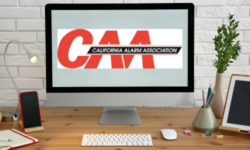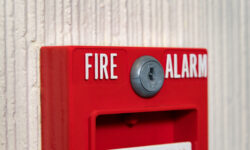CANASA, Toronto Police Grapple With False Alarm Solution
“The real issue is that the monitoring stations are on the hook to collect the money for police and remit it. It’s putting the industry in a very awkward and confrontational position with its customers. It’s our contention the owner/operator of the alarm system should receive the bill.” – Norm Cheesman, executive director, CANASA
“I know the alarm industry is upset we’re not billing what it deems to be the end user, but our position is we’re billing the person that calls us and asks us to attend some location. The problem is primarily economical in that our budget has been reduced some $92M in the past three years. We’ve cut back services in a number of areas, and one thing we’ve looked at is false alarms. If police services are requested and not required, as in the case of a false alarm, we’re going to levy a fee against them [the calling party].” – Deputy Constable Len Conium, alarm coordinator, MTPF
On September 26, 1996, the Metro Toronto Police Force (MTPF) began charging monitoring stations in the Metro Toronto area $73.50 per false alarm call. The Canadian Alarm and Security Association (CANASA) is against the charge, maintaining the fine is excessive and end users should be billed, not the monitoring stations.
Call it what you want: a conflict of perspectives or a major disagreement, but there is a dramatic stalemate in Toronto over false alarm fines. The entire alarm industry in the United States and Canada is carefully “monitoring” the outcome, because it could have widespread ramifications. The crux of the standoff is: Who is the consumer requesting police response? The monitoring company or the end user? The decision now is in the hands of the court.
The struggle to develop a new false alarm policy in Toronto actually began May 1, 1996. The first proposal was for a (900)-number response system, applied for by Stentor/Bell Canada, to charge for dispatch calls. While that tariff application was pending approval by the Canadian Radio-Television Telecommunications Commission (CRTC), the MTPF received approval to bill monitoring stations directly for the cost of false dispatches.
A (900)-number policy has yet to be approved by the CRTC; however, with the direct-to-central-station charge in place, it is doubtful the MTPF will implement a (900)-number system if it ever were to receive approval.
With (900) numbers virtually out of the picture in Toronto, the turmoil over who should be charged and how much remains to be decided. Though the lines of communication are open, CANASA and the MTPF have opposing views. (Note: According to Deputy Constable Len Conium, false alarm coordinator for MTPF, most independent alarm companies, non-members of CANASA, support the current police initiative by paying the fees and not objecting to what the MTPF is doing.)
‘Indirect’ Tax May Be Unconstitutional
Unfortunately, CANASA and the MTPF have learned that having open lines of communication do not always mean there will be a resolution that will please all parties involved. CANASA has filed an application asking a court to decide who the ultimate consumer is, which would provide an answer to the question of who should be billed.
Thus far, the question of who should be billed has been interpreted based on personal experience and the perspective from which the answer is being delivered. “The police believe the problem is primarily equipment error,” says Norm Cheesman, executive director of CANASA. “While equipment is responsible for causing some false alarms, the majority of the problem is an end user problem. And, by the way, the industry has a very big responsibility to reduce that number. I think we’ve been remiss in the role we need to play in educating the consumer. We’ve got to look at ourselves first. If we don’t, the longterm credibility of our industry is at stake.”
The MTPF perspective is basically that end users shouldn’t be billed for the monitoring station’s mistakes. “It’s difficult for us to bill the alarm company’s customers, because they’re not calling the police to request we attend. There are frequent amounts of times where it is an error on the industry’s part that we’re called. Should we bill the customers because the monitoring station made a mistake? I don’t think that’s proper,” says Conium.
False Dispatches Down 53% Since September 1996
Since implementing the $73.50 direct-to-monitoring-station fine on Sept. 26, 1996, the number of false alarms has decreased 53 percent. “It has had the impact we initially wanted. It has reduced the number of false alarms our offices are attending,” says Conium. From 1988 to 1996, when the original false alarm ordinance was in place, false dispatches in Toronto decreased from 300,000 in 1988 to 77,000 in 1996, according to Hopkins.
While non-response to alarms is one possible outcome in Toronto, neither the MTPF nor CANASA want the situation to get to that point. Though it seems CANASA and the MTPF are hitting some bumps in the road to the false alarm solution, both ultimately hope to work harmoniously together to minimize false alarms and false dispatches.
If you enjoyed this article and want to receive more valuable industry content like this, click here to sign up for our FREE digital newsletters!

Security Is Our Business, Too
For professionals who recommend, buy and install all types of electronic security equipment, a free subscription to Commercial Integrator + Security Sales & Integration is like having a consultant on call. You’ll find an ideal balance of technology and business coverage, with installation tips and techniques for products and updates on how to add to your bottom line.
A FREE subscription to the top resource for security and integration industry will prove to be invaluable.







